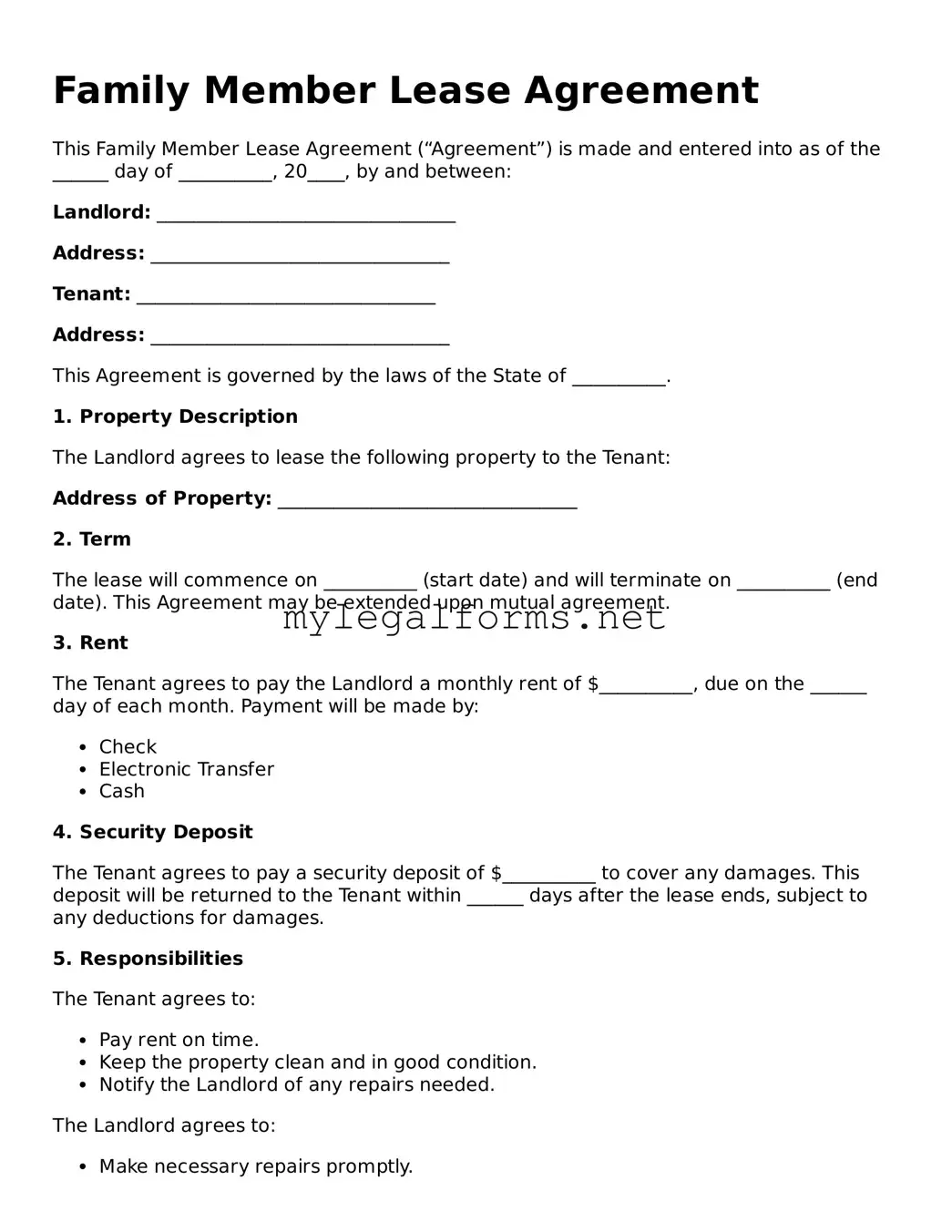Family Member Lease Agreement
This Family Member Lease Agreement (“Agreement”) is made and entered into as of the ______ day of __________, 20____, by and between:
Landlord: ________________________________
Address: ________________________________
Tenant: ________________________________
Address: ________________________________
This Agreement is governed by the laws of the State of __________.
1. Property Description
The Landlord agrees to lease the following property to the Tenant:
Address of Property: ________________________________
2. Term
The lease will commence on __________ (start date) and will terminate on __________ (end date). This Agreement may be extended upon mutual agreement.
3. Rent
The Tenant agrees to pay the Landlord a monthly rent of $__________, due on the ______ day of each month. Payment will be made by:
- Check
- Electronic Transfer
- Cash
4. Security Deposit
The Tenant agrees to pay a security deposit of $__________ to cover any damages. This deposit will be returned to the Tenant within ______ days after the lease ends, subject to any deductions for damages.
5. Responsibilities
The Tenant agrees to:
- Pay rent on time.
- Keep the property clean and in good condition.
- Notify the Landlord of any repairs needed.
The Landlord agrees to:
- Make necessary repairs promptly.
- Respect the Tenant’s privacy.
6. Termination
Either party may terminate this Agreement by providing written notice at least ______ days before the desired termination date.
7. Additional Terms
Any additional rules or agreements may be added below:
___________________________________________________
___________________________________________________
Signatures
By signing below, both parties agree to the terms of this Family Member Lease Agreement.
Landlord Signature: ________________________________ Date: __________
Tenant Signature: ________________________________ Date: __________
